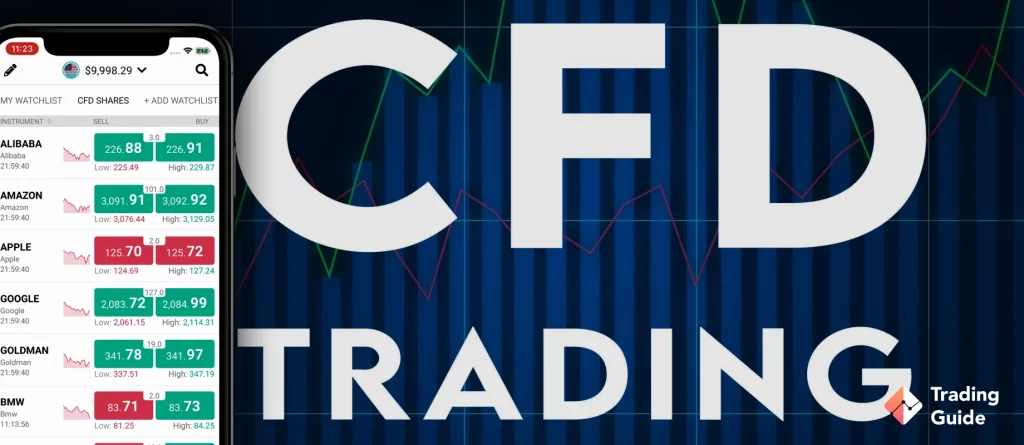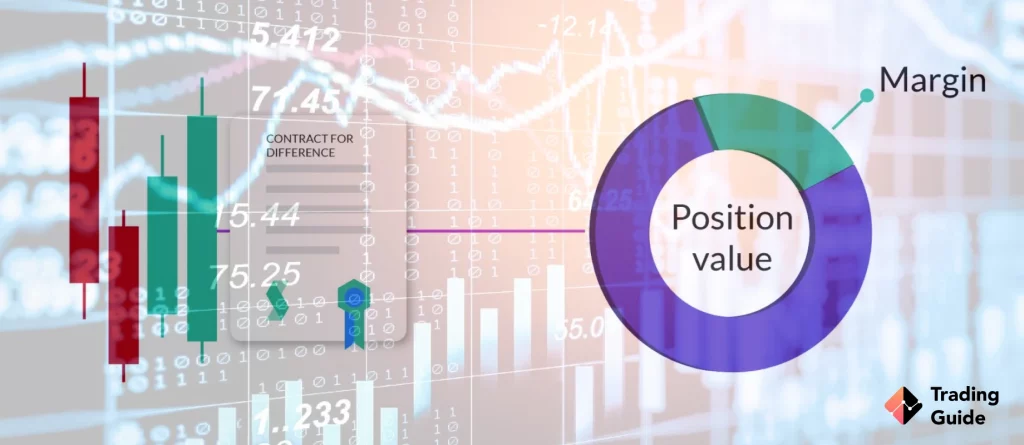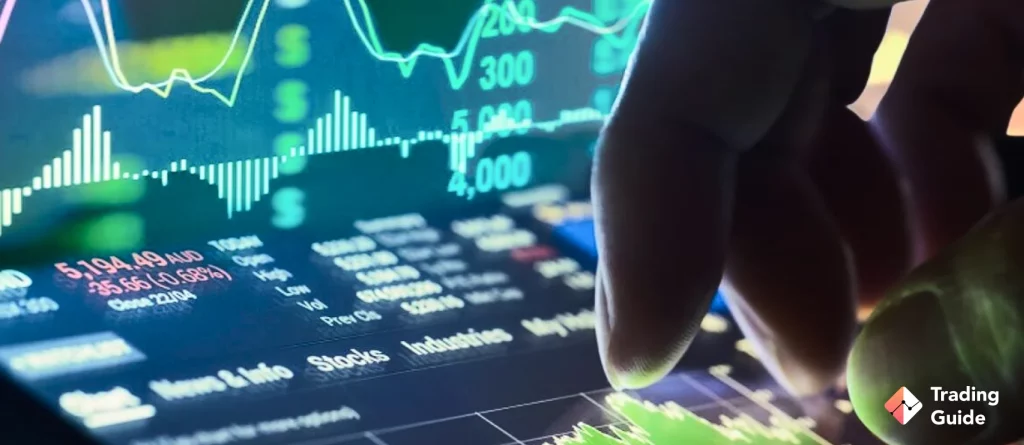In a nutshell, CFD trading carries risk, especially while applying leverage. As a trader, you must approach this trading method with caution to increase your chances of succeeding. Learn how to trade CFDs and always apply risk management controls to mitigate massive losses. Most importantly, trade with the best CFD broker and diversify your portfolio across different asset classes. You should also never forget to track market trends and adjust your trading approach accordingly.
In today’s financial landscape, CFD trading has emerged as a popular method for investors to engage in the markets without owning the actual assets. But what exactly is CFD trading, and how does one go about trading it effectively? If you are looking to invest in CFD assets, we have prepared this guide for you. Here, you will learn the fundamentals of CFD trading, explore its intricacies, and gain practical insights on how to trade CFD successfully. Ultimately, you will be able to make the best decisions and kickstart your CFD trading activities on a good note.
What is CFD Trading?
CFD trading is a form of derivative trading where investors speculate on the price movements of various financial assets without actually owning them. Instead, they enter into contracts with CFD brokers to exchange the difference in the asset’s value. This is from when the contract is opened to when it is closed.
What is Contracts for Difference (CFD)?

Contracts for Difference (CFDs) offer traders an opportunity to profit from price movements in various financial markets without owning the underlying assets. Essentially, a CFD is a contract between a trader and a broker, where they agree to exchange the difference in the value of an asset from the time the contract is opened to when it is closed.
CFDs cover a wide range of assets, including stocks, indices, currencies, commodities, cryptocurrencies, and more. Traders can go long (buy) or short (sell) on these assets, depending on their market expectations. This flexibility enables traders to profit from both rising and falling markets.
CFDs allow traders to access global markets from a single trading platform. This provides diverse opportunities and will enable them to capitalize on market movements across different regions and asset classes. With CFDs, you can also trade on margin/leverage, meaning traders can open positions with only a fraction of the total trade value.
While many traders are earning profits from CFD trading, note that the activity carries inherent risks. Since traders do not own the underlying assets, they are exposed to counterparty risk from the broker. Additionally, factors such as leverage, market volatility, and overnight financing charges can significantly impact trading outcomes.
The good news is that there are various ways to mitigate risks when trading CFDs. For instance, traders should employ risk management strategies such as setting stop-loss and take-profit orders. You should also diversify your portfolio and stay informed about market developments. By understanding the mechanics of CFD trading and adopting a disciplined approach, you can navigate the markets effectively and potentially achieve their financial goals.
5 Simple Steps of CFD Trading for Beginners
Getting started with CFD trading can be an exciting yet daunting endeavor for beginners. However, understanding how to navigate this complex financial instrument is essential to mitigate risks and maximize potential returns. Below, we outline five simple steps to help you kickstart your CFD trading journey with confidence and clarity.
Before venturing into CFD trading for beginners, it is imperative to gain a solid understanding of how it works. Fortunately, many CFD brokers offer learning resources in the form of guides, articles, webinars, seminars, and more. You can also find CFD learning resources on internet podcasts or YouTube channels. This way, you can familiarise yourself with CFD trading and decide whether it is worth putting up your money for.
Once you are fully prepared, find the right broker with features suitable for your trading needs. For instance, it should be reputable and regulated by tier-one authorities, including the Financial Conduct Authority (FCA) in the UK, the Securities and Exchange Commission (SEC) in the US, and more. Consider factors such as trading fees, leverage options, trading platform features, and customer support. Take your time to research and compare different brokers to find the one that best suits your needs.
With your chosen CFD broker, visit its website to open a trading account. Your broker will require you to share your personal details for this process, including your name, email, phone number, and more. You should also be able to create a username and strong password for an added layer of security.
Note that some CFD brokers engage traders in the account verification process before fully activating their trading accounts. Here, you will be requested to share copies of your original ID card or passport and recent utility bill or bank statement to verify your identity and location.
In most cases, account verification takes up to 2 days, after which your broker will send you an email notification. At this point, you can deposit funds into your trading account per your broker’s minimum deposit requirement. The best-regulated brokers allow transactions using various payment methods, including e-wallets, credit/debit cards, and bank transfers. So, ensure you make deposits with an option convenient for you.
Have a trading plan that outlines your financial goals, risk tolerance, and preferred trading strategies. Determine the markets you want to trade, the timeframes you will be focusing on, and the indicators or tools you will use for analysis. With your trading plan in place, feel free to start trading CFDs. Begin by analyzing the markets and identifying potential trading opportunities based on your strategy. Take a disciplined approach to risk management and avoid letting emotions dictate your trading decisions. For beginners, start with small position sizes and gradually increase your exposure as you gain experience and confidence in your trading abilities.
How Does a CFD Work?

CFD or Contract for Difference works by enabling traders to speculate on the price movements of various financial assets without owning the underlying assets themselves. Essentially, a CFD is a derivative contract between a trader and a broker. When a trader enters a CFD, they agree to exchange the difference in the value of an asset from when the contract is opened to when it is closed.
Note that CFD contracts have a specified duration, after which they expire. Traders can choose to close their positions before the contract expires to realize their profits or losses. Suppose a trader wishes to keep their position open beyond the contract expiry date. In that case, they can roll over the contract to the next expiry date by paying or receiving the price difference between the two contracts.
In CFDs, you can either a long or short position, depending on market expectations. This means that if you believe that the price of an asset will rise, you will enter a long position. Conversely, if you anticipate an asset’s price will fall, you will enter a short position. CFD trading also comes with margin, whereby traders open positions with only a fraction of the total trade value and earn massive profits or losses at the end of the trade.
The profit or loss on a CFD trade is determined by the difference between the entry price and the exit price of the contract. If the price moves in the direction the trader predicted, they will make a profit. However, if the price moves against them, they will incur a loss.
Factors to Consider Before Trading CFDs

Before you start trading various financial market securities as CFDs, it’s crucial to consider several key factors that can significantly impact your trading experience and outcomes. If you are new to CFDs, here are some essential considerations to keep in mind.
Above everything, ensure you have a solid understanding of what CFDs are and how they work. Take the time to educate yourself about the mechanics of CFD trading, including leverage, margin requirements, and the risks involved. This foundational knowledge will help you make informed trading decisions.
CFD trading involves significant risks, including the potential for losses that exceed your initial investment. Therefore, have a robust risk management strategy in place. Consider setting stop-loss orders to limit potential losses, diversifying your portfolio, and avoid over-leveraging your trades.
Choosing the right broker is critical for a successful CFD trading experience. Look for a reputable broker with a proven track record, competitive trading conditions, reliable customer support, and regulatory compliance. Take the time to research and compare different CFD brokers to find the one that best suits your needs and preferences.
You must conduct a thorough market analysis to maximise your potential in CFD trading. This means that besides understanding what influences asset prices, you should stay informed about market developments, economic indicators, geopolitical events, and industry trends that may impact the assets you are trading. This way, you can easily identify potentially profitable opportunities and make more informed decisions.
Develop a clear and well-defined CFD trading strategy based on your financial goals, risk tolerance, and market expertise. Whether you prefer technical analysis, fundamental analysis, or a combination of both, having a structured approach to trading will help you remain disciplined and consistent in your decision-making process.
Be mindful of the costs associated with CFD trading, including spreads, commissions, overnight financing charges, and any other fees imposed by your broker. These costs can eat into your profits, so it’s essential to factor them into your trading plan/budget and evaluate their impact on your overall profitability.
As a CFD trader, be mindful of your emotions, as they can cloud your judgment and lead to irrational trading decisions. Always maintain emotional discipline and stick to your trading plan, even during periods of market volatility or uncertainty. Avoid chasing losses, over-trading, or letting fear and greed dictate your actions.
Note: Leverage trading is highly risky. Therefore, before venturing into it, make sure you understand how it works and has conducted thorough research and analysis on the instruments you wish to trade.
Read our London Capital Group review in the other article.
How to Manage CFD Trading Risks
When dealing with CFDs, it’s vital to comprehend that employing leverage can amplify your potential losses significantly. As a trader, a profound understanding of the associated risks is paramount. Note that between 70-80% of retail investors lose money with leveraged products — a clear indication that CFD trading may not be suitable for every investor. To mitigate the risks associated with CFD leveraged products, always assess your risk tolerance and level of trading experience before venturing into this market. Moreover, be mindful of the UK’s regulatory framework, which imposes a 1:30 leverage cap on CFDs. This limitation aims to mitigate risk but can still result in substantial losses in the event of an unexpected downturn.
As mentioned earlier, CFD trading comes with certain risks, including market volatility, leverage amplification, and the potential for losses exceeding the initial investment. To navigate these risks effectively and protect your capital, it’s essential to implement sound risk management strategies. Here’s how you can manage the risks associated with CFD trading.
- Develop and stick to your trading plan – Establishing a well-defined trading plan is essential for managing CFD trading risks. Define your financial goals, risk tolerance, and preferred trading strategies. Outline clear entry and exit criteria for your trades and stick to your plan despite market fluctuations.
- Start slowly and develop your expertise – Begin your CFD trading journey cautiously by starting with small position sizes. Take the time to build your skills and expertise gradually. Practice on demo accounts to gain confidence and refine your trading strategies before risking real money.
- Familiarize yourself with the financial market you want to trade – Thoroughly understand the markets you intend to trade on, including the factors influencing asset prices and market dynamics. Conduct comprehensive market analysis and stay informed about economic indicators, geopolitical events, and industry trends that may impact your chosen markets.
- Track your positions – Regularly monitor your open positions and stay vigilant to changes in market conditions. Keep an eye on price movements and news developments that may affect your trades. You should also adjust your positions or implement risk management measures to protect your capital. Fortunately, many regulated CFD brokers have trading apps you can install on your mobile device to manage your trades even on the go.
- Apply risk management controls – Utilize stop-loss and take-profit orders to effectively manage your risk exposure. Set stop-loss orders to limit potential losses and take-profit orders to secure profits at predefined levels. These risk management tools can help protect your capital from sudden and adverse market movements.
- Never stop learning – The financial markets are constantly evolving, so it’s crucial to continuously educate yourself and stay updated on market trends and trading strategies. Invest in your learning by reading books, attending seminars, and leveraging educational resources provided by reputable brokers.
FAQs
A CFD account is a type of trading account specifically designed for trading Contracts for Difference. It allows traders to speculate on the price movements of various financial assets without owning the underlying assets themselves. In a CFD account, traders can buy or sell CFDs on a wide range of markets, including stocks, indices, currencies, commodities, and more.
Absolutely. CFD trading can be suitable for beginners, but it’s essential for new traders to understand the risks involved for a proper approach. You can start by learning all about this trading method and practice with a broker’s demo account before risking real money.
The basics of CFD trading involve speculating on the price movements of various financial assets without owning the underlying assets themselves. CFDs can be traded on a wide range of markets, and traders have the flexibility to take both long (buy) and short (sell) positions. However, it is important to note that while you can make profits, losses are inevitable.
Yes. We have seen many traders earning profits by trading various assets as CFDs. However, success in this activity depends on how well you understand the market and strategize. Having the best CFD broker also goes a long way in maximizing your potential, as you will fully focus on your activities.
Final Thoughts
CFD trading offers both opportunities and risks for traders in the financial markets. If you have been considering exploring it, we encourage you to do so with caution. This means that you should start by educating yourself about the mechanics of CFDs and develop a clear trading plan tailored to your risk tolerance and financial goals. For beginners, practice CFD trading using your broker’s demo account to gain experience and confidence before risking real money. Remember, discipline is key when trading CFD. Therefore, don’t forget to apply risk management controls, diversify your portfolio, and keep learning.




Do you have any courses for CFDs trading? Or could you recommend some?
We rarely recommend trading courses because they vary in quality. There are, however, several great courses available online and many of our recommended brokers provide their own webinars and courses.
In addition, you can make use of an endless resource of trading books and educational material online to optimize your strategies and improve your chances of making a profit.
I've got to say trading is not safe, especially for beginners...